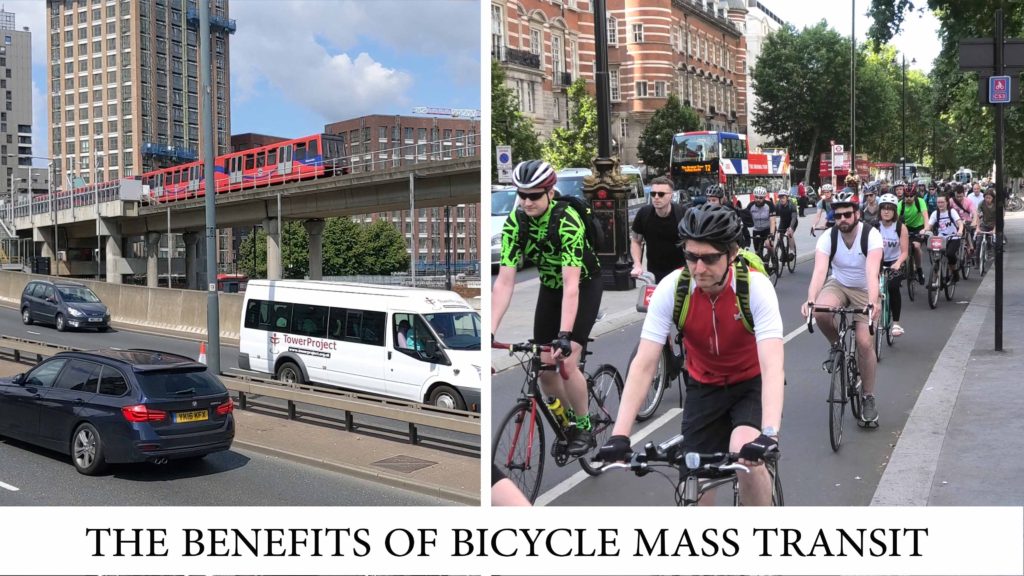40:1 Benefit:Cost ratio for cycling mass transport infrastructure
Summary of the benefits from investing £6.2bn/year in cycling infrastructure for bicycle mass transit
(1) Every town in the UK will have a safe and segregated Cycleway Network of the kind being built, far too slowly, in London
(2) The proportion of urban trips done by bike will rise from under 2% to over 40%, as it is in the cities of Denmark and Holland
(3) There will be a 20% reduction in UK emissions of greenhouse gases so that climate change will be slowed.
(4) Air quality in cities will be greatly improved, with less nitrogen oxide, carbon monoxide, and particulates to damage your lungs
(5) People will be healthier with less obesity, diabetes, cancer, heart disease and depression
(6) With less money being wasted on hydrocarbons, the UK balance of payments will be improved and household expenditure on transport will fall from its current £62/week
(7) Cities will be quieter, with the roar of traffic giving way to the sounds of birds, bees and breezes
Note: the UN Environment Programme advises countries to spend 20% of their transport budgets in Non Motorised Transport. For at least a decade, the best value opportunity in the UK is investment in cycle infrastructure, including cycleways, bicycle parking, home zones. For 2019-20, 20% of the UK transport budget is £6.2 billion #6Billion4Cycling .
The Benefit:Cost Ratio (BCR, aka Cost:Benefit Ratio CBR) is much more favourable for bicycle infrastructure than for road or rail infrastructure projects. A £2 return for £1 invested (2:1) is considered OK for road and rail. For cycle mass transit BCR ratios range between 5:1 and 50:1 (more research is required to collect information). My calculations (as a time-expired economist) are that for cycling infrastructure in London the direct transport benefits are about 20:1 and the health and environmental benefits are also 20:1. If correct, this offers a total Benefit:Cost Ratio of 40:1. See also:
Invest 20% of the transport budget to raise the cycling mode share by 2.5%/year

Public investments in road and rail typically have a BCR of 2:1. For cycle mass transit the ratio can be 40:1.
